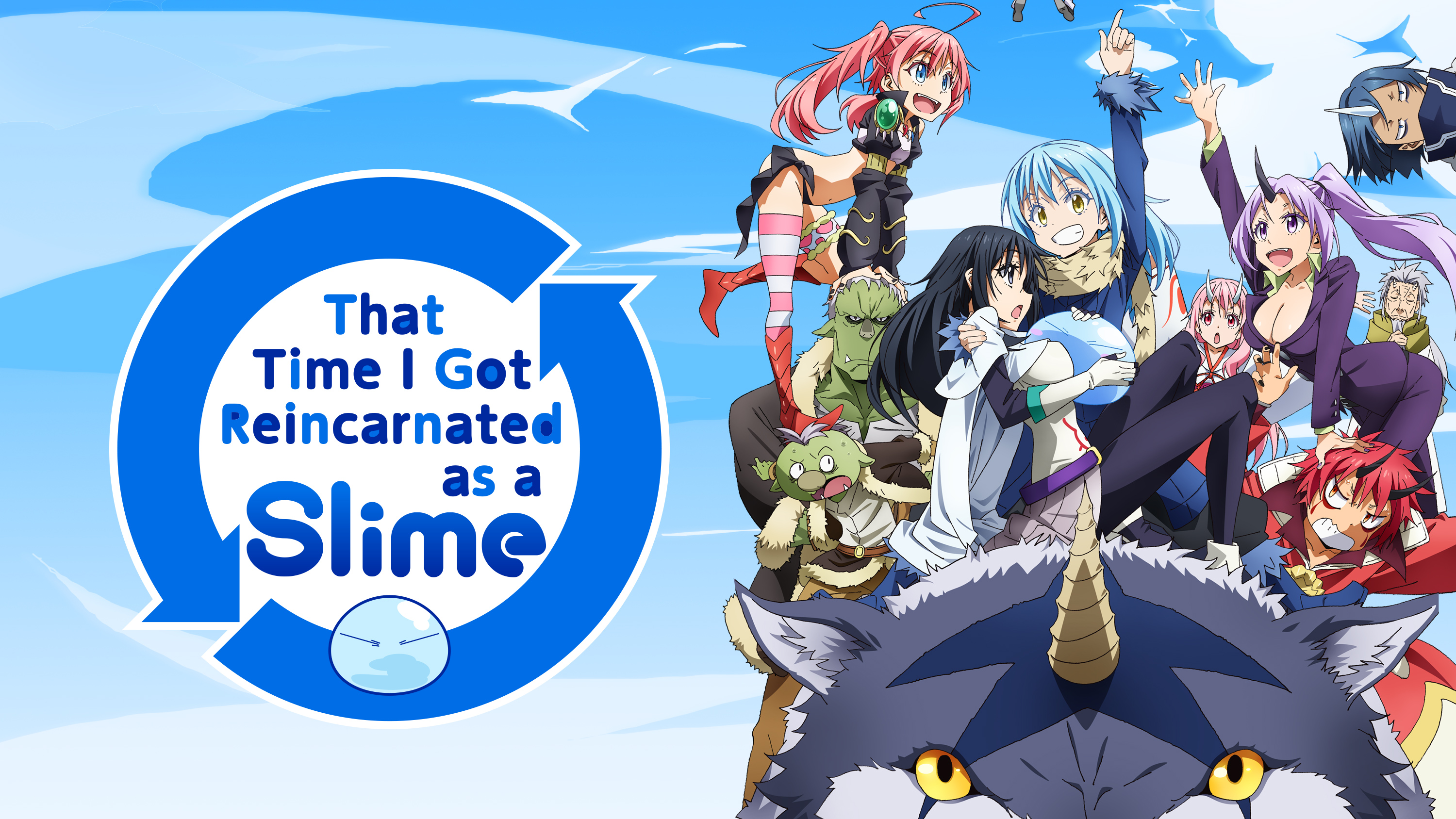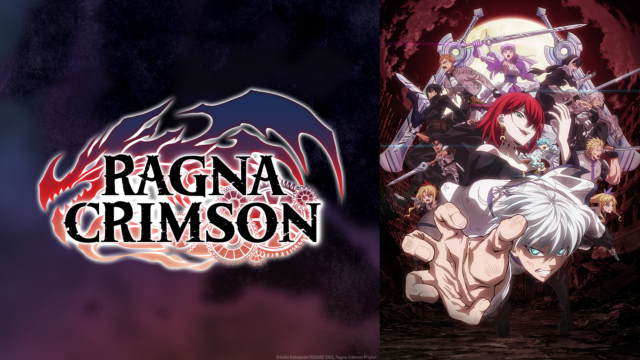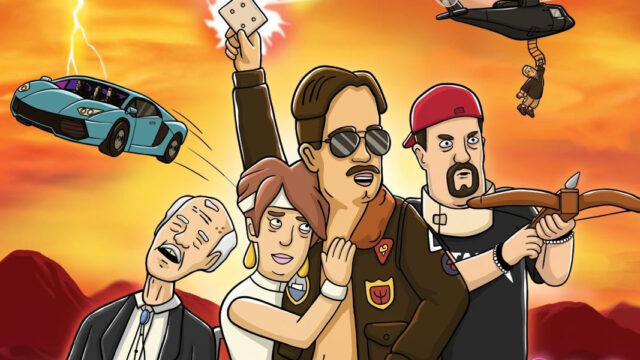English Dub Season Review: That Time I Got Reincarnated as a Slime Season One
The Fellowship of the Slime.
Overview (Spoilers Below!)
Satoru Mikami’s mundane life as an office worker is brought to an abrupt end when he’s stabbed on the streets of Tokyo. In his next life, Satoru is reincarnated as an unassuming but immensely powerful slime monster. Given the name Rimuru Tempest by the friendly dragon Veldora, the slime embarks on a comedic D&D-esque journey through a fantasy world.
Using their wits and unique skill “predator”—which allows Rimuru to copy the skills of any monster they eat—Rimuru gains control of a village of goblins, a community that soon expands to include dire-wolves, dwarves, ogres, lizardmen, orcs, demon lords, and even some humans. As head of the Jura Tempest Federation, Rimuru fights wars, forges alliances, and encourages technological advancement. They defeat the feared and hungry Orc Lord; ward off the invincible mammoth Charybdis, and befriend the melancholy human hero Shizu. Through this close bond, Rimuru learns how to take on a human form; they also promise to fulfill Shizu’s dying wish to save a class of cursed children. Armed with one-liners and charm aplenty, everyone’s favorite slime is surely up to the task.
Our Take
That Time I Got Reincarnated as a Slime is hilarious, charming, and boundlessly inventive. It is also slow-moving, derivative, and regressive. When it’s embracing its roots in comedy, this show hits the nail on the head, with a seemingly endless well of clever, anachronistic one-liners. On the other hand, when Slime attempts to tackle serious diplomacy and warfare, it reads like an even more boring, knock-off version of The Lord of the Rings.
The first few episodes really kill it on the creativity front. The concept of Rimuru’s reincarnation into slime is wild all on its own, but the visuals that accompany their transformation utilize a large variety of animation techniques that I’ve never seen in anime before. Rimuru’s riffing with Great Sage is hilarious, and right away, this slime stands out as a likable and relatable character. Their “winging it” attitude towards most of their problems, their compassion but also impatience and narcissism, their adorable human form—all of these things make Rimuru a deeply engaging protagonist, and that’s most of what kept me coming back week after week. Even though the season steadily declines in overall quality, Rimuru always keeps me entertained. Brittney Karbowski’s upbeat delivery is infallibly funny and charming, and Mallorie Rodak’s little bursts of input as Great Sage are always good for a laugh. Plus, the first episode gifts us the wonderfully memorable scene of Tamura dumping Satoru’s computer into the bathtub to clear his search history. You’re doing the Lord’s work, Tamura.
But unfortunately, the whole show isn’t made up of Rimuru making friends like Veldora and dicking around with their powers. There are so many characters here that most of them are terrifically flat and redundant, especially when we’re forced to sit through humans or lizardmen working out diplomacy amongst themselves in scenes that have nothing to do with Rimuru. Many of Rimuru’s allies, such as Benimaru or Geld, have no personality to speak of other than loyalty to their master (which of course means that their relationships with Rimuru are solely master-servant and aren’t very engaging either). Other characters, such as Gabiru, are reduced to a single joke that’s repeated over and over (in Gabiru’s case, he’s arrogant and overconfident). Yet others, such as Vesta, start out as terrible people and come around immediately the second they pass into Rimuru’s service, making their development wholly unbelievable.
Slime also does a great disservice to its female characters. This is a fantasy world with talking slimes and board game-playing dragons, and yet the writers seemingly couldn’t imagine an army that includes women as well as men. The female characters are few and far between, and they’re usually just talked about as a pair of big boobs (Shion) or as someone who’s disappointingly flat-chested (Milim). When we do see competent female fighters, they’re the exception rather than the rule. Shizu is certainly the most developed woman here, and—spoiler alert!—as soon as we get invested in her, she dies, leaving the non-female Rimuru to carry out her legacy. Where are the female merchants, ministers, craftswomen, and weird lonely dragons in caves? Instead, we get bouncing boobs, sexy elves, and lizard-women turned into humanoids in the most transparent attempt to create waifu material ever.
This is such a weird contrast to the treatment of Rimuru’s gender, which is one of the most daring and compelling aspects of the show. In both their slime and human bodies, Rimuru just… doesn’t have a physical gender. According to the wiki, Rimuru identifies as male despite their lack of sex characteristics, but this is never confirmed in the show itself. They remark comically on their lack of a penis… and that’s it. Rimuru is intersex, and their gender is a mystery. Except… this English dub makes the strong choice of using he pronouns for Rimuru, despite the fact that their gender is never stated and they have a female voice actor. It makes me pretty uncomfortable, honestly—that the dub would go out of their way to gender Rimuru because, again, even when our protagonist is a talking slime, the idea of a character who has no gender is just too radical for people to comprehend. But maybe Rimuru is gendered in the Japanese-language version too, I don’t know. As I’ve said in previous reviews, I’m hindered in my interpretation by my inability to speak Japanese.
While the animation is generally fine, there are some annoying cut corners in this show, such as how the lizardmen frustratingly never emote or move their mouths while speaking. The worst offender on this front is, of course, the season’s final episode, which boasts almost no new animation at all. Slime severely loses steam towards the end of season one, with two episodes that almost purely recap and another that’s a bland flashback that serves very little narrative purpose. I really don’t know why they didn’t just end the season after 22 episodes, but c’est la vie, I guess. More money is better.
And everything else is such a mixed bag. The battle scenes are sometimes creative and engaging, as we watch Rimuru come up with creative solutions to utilize their talents against the unique weaknesses of a specific foe. In others, Rimuru relies heavily on others’ ideas or wins without a struggle, making for a bland viewing experience. In general, Rimuru is so OP that everything comes to them way too easily. Gobuta’s arc from incompetent doofus to skilled warrior is rewarding, but watching Rimuru abuse him mercilessly is pretty uncomfortable. Whole plots and characters are repeated wholesale, such as when Rimuru overestimates their ability to name everyone in one day and then passes out (twice) or when newcomers underestimate the slime and then Rimuru whoops their ass and prove themselves a desirable ally (countless times). Many enemies are too camp to be taken seriously (or are literal clowns) in what are supposed to be somber scenes. Other villains are just pure evil, and there’s not much more to be found in them (although the battle against Charybdis is plenty entertaining, and Geld’s secret motivation makes him a somewhat compelling character).
More than anything, I wanted more character work from this show. Although Rimuru’s overconfidence is proved time and time again, they never learn from their mistakes or develop as a protagonist. Other than Shizu and the kids, Rimuru’s relationships with other characters go largely unexplored; the show chooses instead to focus on the creation of politics and infrastructure within Rimuru’s kingdom, which feels more like a history lesson than a comedy TV show. But Rimuru’s dynamic with the kids is cute and enjoyable, and their discussion of manga with Yuuki is one of the funniest scenes in the whole series.
That Time I Got Reincarnated as a Slime intrigues me, makes me laugh, makes me yawn, and makes me roll my eyes, sometimes all in the same episode. At the end of the day, it’s hard to say whether I really enjoyed this series overall. But some burning unanswered questions—and how much I like Rimuru—make me want to check back in next season anyway. This show has potential. Maybe someday it’ll evolve enough to truly use it.



























Hi Ashley, thank you so much for reading and we love the feedback. Note that on that day we had 14th posts go up and only ten posts show on the front page, so it's possible the preview had already been archived by the time you got to it. One recommendation would be to add our RSS feed to your favorite news aggregator service like Feedly, this way you get all of the latest posts!